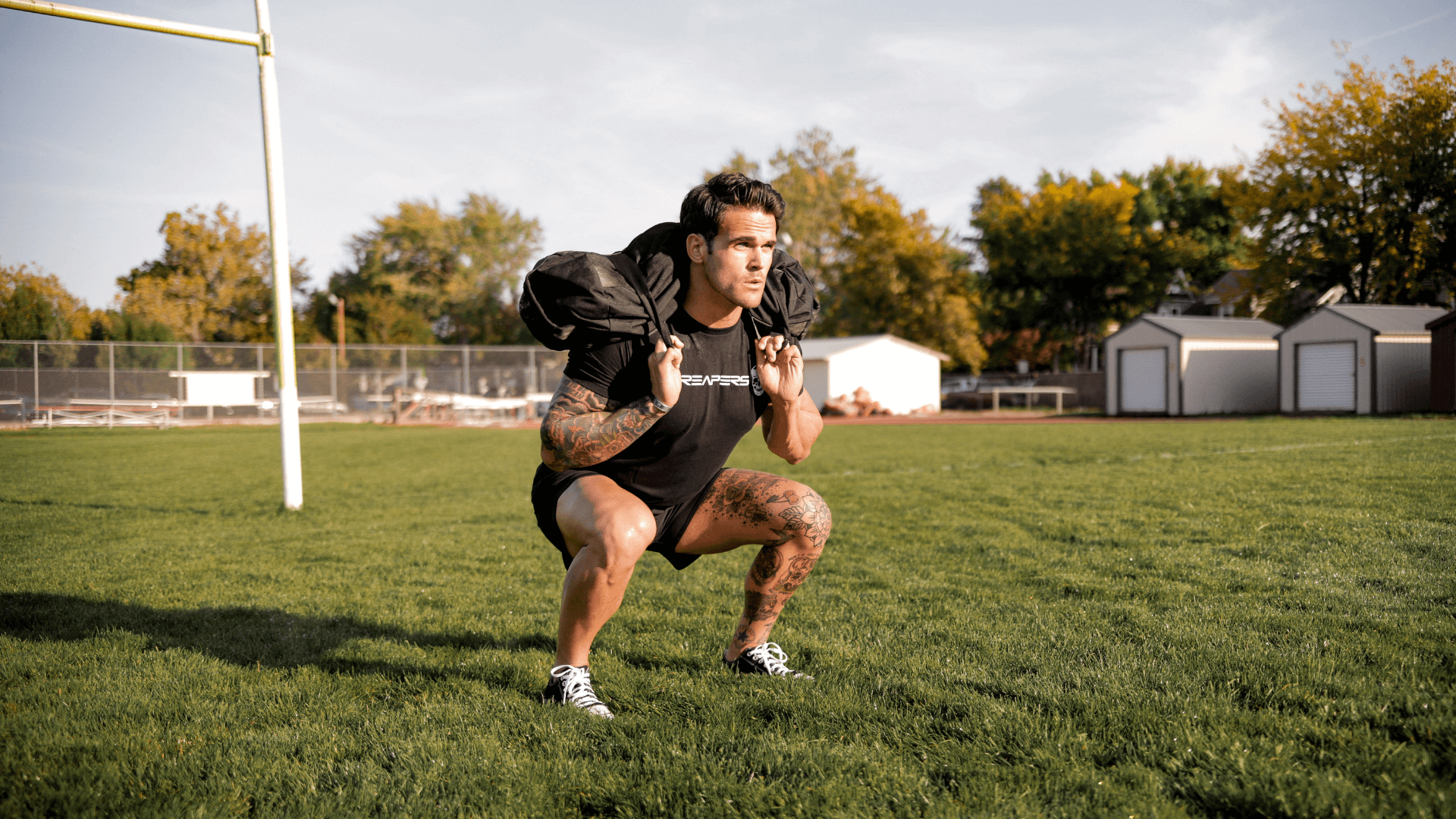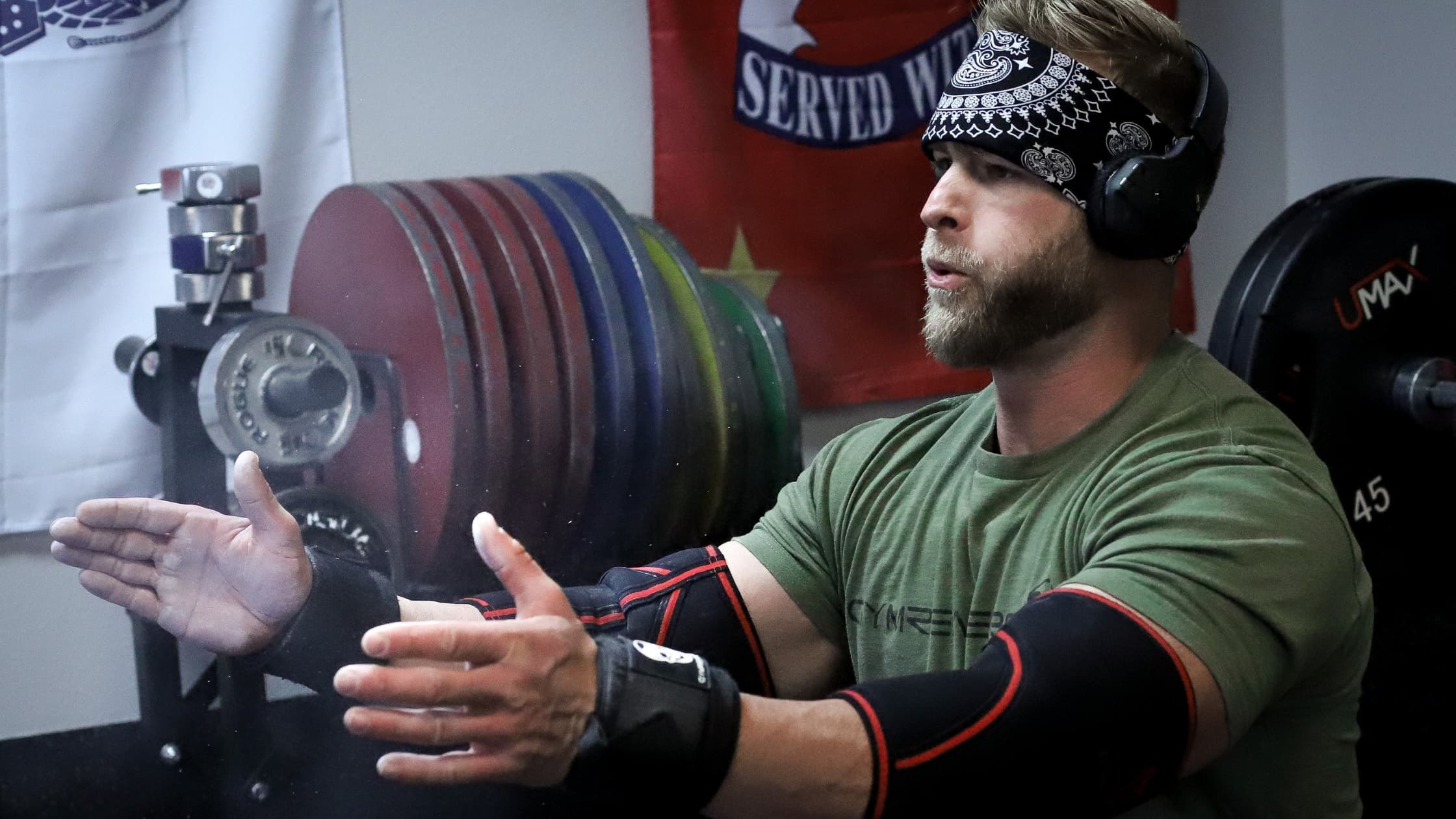Have you ever noticed that some people absolutely refuse to work on their lower body? A classic sign of this is when you see someone wearing a stringer or tank that shows off their upper body gains, but always wears sweats or jogging bottoms. That person likely skips leg day — specifically squats. Maybe they don’t know where to start or are afraid of injury, right?
Today, we’ll talk about the five most common types of squats that just might convince that one dude to train his legs. Squats are one of the most significant exercises of any leg day routine and different types of squats help keep the body in good proportion.
A well-trained pair of legs is not only impressive but helps with the power and performance of the lower-body.

How to do a squat?
First up, we want to make sure that we cover proper squat form for anyone that isn’t familiar or comfortable with a traditional squat. There are plenty of ways that you can improperly do a squat so make sure to check that form each time you perform squats.
Also, mobility is key to performing a proper squat, so make sure you’ve properly warmed up and stretched before you attempt a squat workout. With the preliminary information covered, let’s dive into how to do a squat.
First, your stance determines how you lift. The ideal foot placement is shoulder-width apart. As you explore squat variations and get more experience you’ll learn other suggestions like outside shoulder-width and feet together.
Next, you’ll want to sit back as if you’re sitting down in a chair, with your butt back as you start bending your knees.
You’ll know if you’re doing this correctly if your knees are in line with your toes (and not caved in). Maintain proper posture with your back straight and head looking ahead instead of down or bobbing back and forth.
That’s the basic routine of performing a standard squat. You can either do a squat with just your bodyweight or use a barbell to do a back squat (more on that later on in this article).
As you keep getting comfortable and perform squats regularly, you’ll notice that even small changes like your stance or elevated foot placement work different aspects of your quadriceps, hamstrings, and glutes muscles.
What muscles do squats work?
Depending on the types of squat, they work pretty much every muscle group in the entire lower-body. Squats are considered the king of exercises because of their versatility and ability to train quadriceps, hamstrings, glutes, inner thigh (adductor), calves, back, and lats.
A few example exercises that work the quadriceps include the front squat, pin squat, and pause squats. Meanwhile, exercises like the low bar squat will focus on muscles in the posterior chain such as the glutes.
As you can see, squats target a huge amount of muscles in your body, which gives you an idea of why squats are so powerful. A proper squat routine will help you build muscle (all over your lower and sometimes upper body), keep your body strong and proportionate, and boost overall confidence with your fitness training routine.

Buy 7mm Weightlifting Belt
How much should I squat?
The answer to this question depends on a lot of factors, however, there are some general guidelines that you can follow. Most of us are within a beginner to an intermediate category when it comes to squats. There are exceptions to how much you should squat, especially if you’re a powerlifter or an advanced lifter. Generally, most of us should be able to squat 75% or greater of our body weight for back squats and 50-75% of our body weight for front squats.
Again, these projections depend on many different factors such as the variations of the exercise, your experience as a lifter, your age, gender, body weight, use of gear (like knee wraps and weightlifting belts), and your technique/stance.
Have you ever noticed that you can squat more (heavier) on back squats versus front squats? That’s because the mechanics of the exercise is different, hence why everyone’s total for how much they can squat will be different. With proper technique and a full range of motion, the ultimate answer on how much weight you can squat is up to you.
The top squat variations
1) Back squat
The back squat is one of the most popular moves and is part of any training program aimed at strength. Part of the big three compound lifts, the back squat should be incorporated into your leg day routine at least once a week. Remember the basic routine about squats from earlier as you get ready to start your set.
To perform a squat, you’ll load the weight onto a barbell and place it on your trap and upper back area, using your legs and a firm core to complete one rep. When done properly with intensity and adequate reps, the back squat can lead to serious muscle growth in your quadriceps, hamstrings, glutes and more.
2) Front squat
You can see strength and power athletes doing front squats, as well as competitive sports, fitness, and CrossFit athletes. So, how to front squat? Just like it sounds, the front squat is the opposite of the back squat where the weight is loaded (and positioned) on your shoulders.
Front squats require a little more flexibility and support from your wrists, chest, and shoulders. If you have mobility issues in your wrists, you can cross your arms to make an X, keeping them out and in front of you.
You’ll be supporting a loaded barbell as you squat down to perform one rep. Keep your knees over your toes so you can sit down into a squat, rather than allowing your hips to push too far back and straining your back.
As you stand back up, push through the foot fully while maintaining a strong upright torso and a level arm/elbow position. Some of the muscles that the front squat forces you to use and grow your quadriceps, glutes, and upper back — all while improving balance.

3) Bulgarian split squat
The first two variations of squats we mentioned are pretty straightforward. The Bulgarian split squat is where the sweat and the burn really start to become noticeable. This intermediate move targets your quadriceps, hamstrings, calves, core, and spinal erectors and really tests your balance and coordination.
One of the biggest challenges with performing a Bulgarian split squat is finding proper foot placement, as it forces you to have one leg back and elevated on a bench or box.
As the name implies, your stance is in a split position (about the shoulder-width distance from the other foot. While one leg is back and elevated, the forward leg is doing all the work, so avoid engaging the back leg as it's there to provide stability and balance only.
You can do this move with your bodyweight only or if you’re confident in your mobility, try it with some dumbbells or kettlebells for added resistance.
4) Goblet squat
Switching back into an easier move, the goblet squat is relatively simple to do as long as you keep your knees in line with the body and don’t lean too much forward. The major muscle groups that you’re targeting are the glutes, quadriceps, hamstrings, calves, and shoulders.
You can perform goblet squats with just your bodyweight or for added resistance use a dumbbell or kettlebell for a total-body workout. The best thing about doing goblet squats is that you learn the proper squat technique and realize some of the mistakes you can be making.
For example, since you’re holding the weight with your hands and out in front of you, you’re noticing which muscle group you need to activate and how to keep your posture steady. To do a goblet squat, grab a dumbbell or kettlebell and hold it in closely in front of your chest.
Next, you’ll sit back making sure your core and chest are firm and elevated as you squat down into the eccentric portion of the move. As you stand up to complete the move, keep your knees aligned with your shoulders, and avoid caving them inward.

Which equipment to use?
No squat is complete without some form of equipment. Even if you’re doing bodyweight squats, you’ll still need some form of assistance from a bench, barbell, dumbbell, kettlebell, or machine. The most important piece of equipment that you should never squat without is a power rack because of its many safety features.
For back squats and front squats, you’ll use a barbell and progress with weight as your technique and power improve. You can also use a machine you might see in your gym or fitness center called a hack squat, which is angled at 45 degrees giving you control to work your quadriceps, hamstrings, and glutes (for front or back squat variations).
We also mentioned that using equipment like dumbbells and kettlebells is essential when doing split squats or goblet squats. The added resistance of either option makes you sweat more, burn more calories, and build stronger muscles.
If you’re not able to go to the gym or would rather work out at home, you can try incorporating resistance training into your routine. Resistance bands can be a great way to build your strength and stamina without a barbell, dumbbells, or kettlebells to get you started. Whatever your squat variation of choice is, there is a piece of equipment made for it.
Squat support
For those of you who are intermediate or advanced lifters, you will often find that you need to push yourself harder. Whether you’re trying to reach a new PR or just trying to get stronger, there are certain supportive items made to elevate your training. One of the most common items you’ll see during leg day (especially squats) is a weightlifting belt.
For powerlifting, a lever belt is used most often because it gives you a tighter fit with a quick-release option. The Gymreapers 10mm Lever Belt is ranked as the best lever weight lifting belt on the market in 2021. The other option is a leather weightlifting belt, which features a buckle and supportive back elements that help with proper breathing technique and squat form.
Related: How to wear and adjust a weightlifting lever belt
Knee sleeves and knee wraps have also become an essential part of powerlifting, especially for squats. It’s been said that knee wraps help lifters squat more weight. The energy stored in the knee wraps is helpful during the eccentric phase of the squat, which acts as a propellant to move the lifter upwards and complete the move (rep).
Knee sleeves are helpful for similar reasons, however, they also provide the lifter with constant compression to aid with reduced swelling and increase blood flow to the knee joints. This type of supportive gear is particularly popular with powerlifters and CrossFit athletes as it helps give them stability and support with less joint discomfort and agitation.

Related: Should you wear knee wraps?
The finisher
There you have it. No matter if you’re just starting with lifting and needed more clarification on squats, squat variations, equipment, and squat support gear, there is information you can use to improve your technique and strength. What squat variations have you tried?
Do you use specific equipment or supportive gear each time? Let us know your routine in the comments.













Leave a comment
All comments are moderated before being published.
This site is protected by hCaptcha and the hCaptcha Privacy Policy and Terms of Service apply.